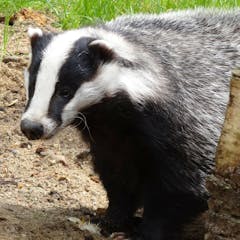
Articles on Hunting
Displaying 41 - 60 of 122 articles

For the first time in the US, a ballot measure will ask voters whether to restore wolves to a place where they’ve been eradicated. Coloradans have strong views on both sides.

The “Tasmanian tiger” was hunted to extinction based on its perceived size as a predator big enough to take sheep. But it seems this was just a tall tale, and the thylacine weighed just 16.7kg.

Enforcement at protected areas is key way to prevent bushmeat poaching, but it’s also important to recognise the contribution bushmeat makes to livelihoods, incomes and food security.

Illegal hunters are damaging farm property, shooting at buildings and killing livestock. So why do farm trespass laws target animal activists?

All animals plays a role in nature, and in times of biodiversity loss and climate change, hunting “common” species such as foxes and badgers is irresponsible .

In the 1800s, Americans hunted many wild species near or into extinction. Then in the early 1900s, the US shifted from uncontrolled consumption of wildlife to conservation. Could Asia follow suit?

Frogs are harvested as food by the millions every year. A new study shows that uncontrolled frog hunting could drive some populations to extinction by midcentury.

Researchers have discovered an alarming new threat to one of the most incredible wildlife migrations on Earth.

For decades, the extinction of passenger pigeons has been explained by two theories of human impact. New research shows one of these theories is now more compelling than the other.

The novel is timely in light of the fact that, increasingly, readers are invited to consider what responsibilities they need to assume in the face of women’s disclosures about their life stories.

This diminutive deer isn’t the only fantastical life form discovered in Vietnam. But hunting and habitat destruction threaten many with extinction.

Europe is getting wilder as more people live in cities, but Naya’s death shows this trend may have limits.

In the absence of animals to help larger trees reproduce, forests are suffering.

Scientists have discovered how the wise old barn owl is so good at catching rodents.

A holistic approach to conservation finds people have a place in the natural world and a responsibility to maintain it.

Once hunted into corners of North America, black bears have expanded across the continent since the early 1900s. But bears that end up living near people aren’t seeking close encounters.

In light of Botswana’s decision to allow trophy hunting again, new evidence suggests elephant poaching has been on the rise.

Trophy hunting is not the solution to Africa’s wildlife conservation challenges. There are other ways.

A series of new studies sheds light on the population crash and extinction of the giant birds, lemurs and more that roamed the island until around A.D. 700-1000.

Amid a growing human population, African elephants are confined to an increasingly managed existence. Do we want more for one of the world’s most loved species?
